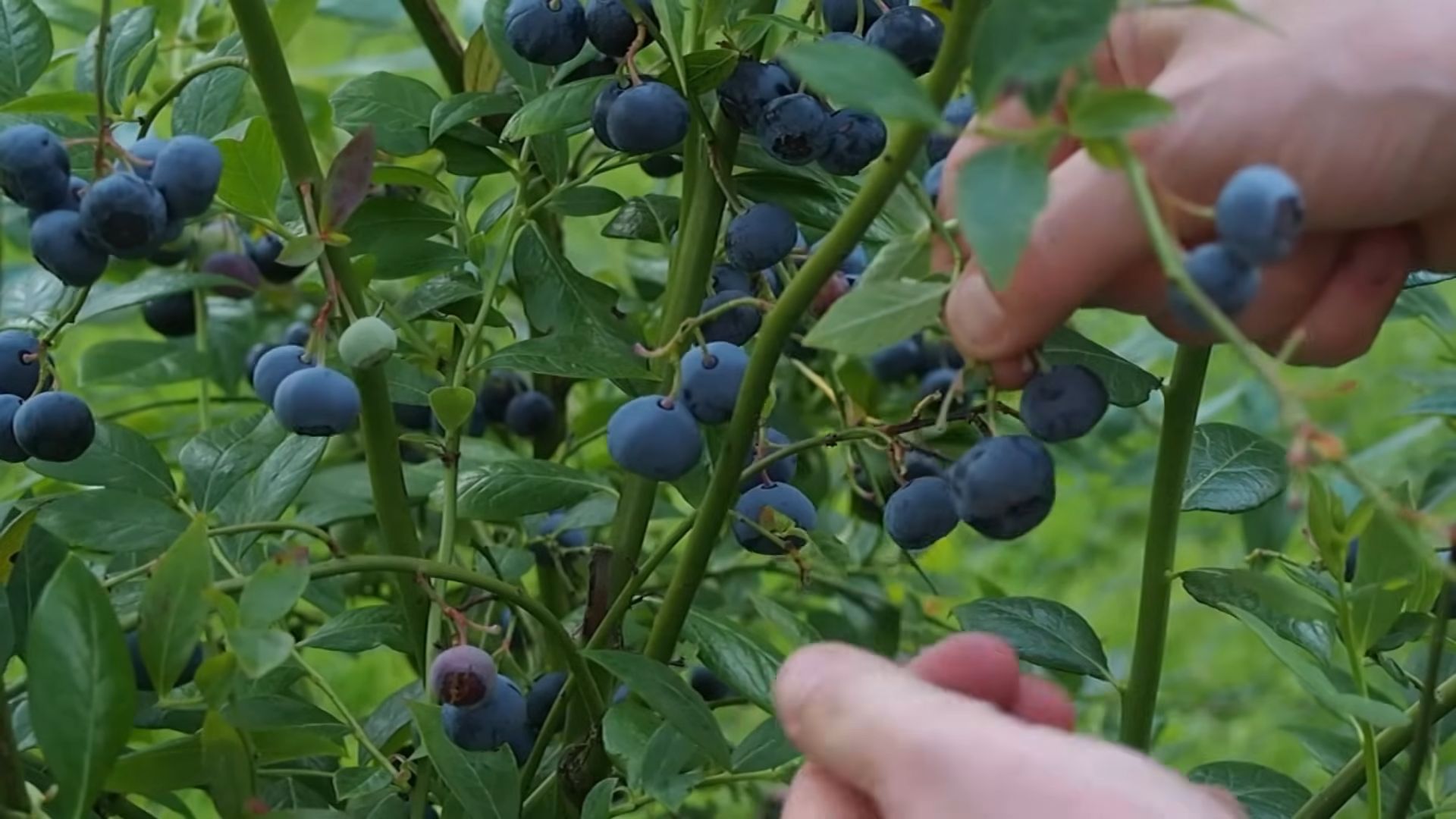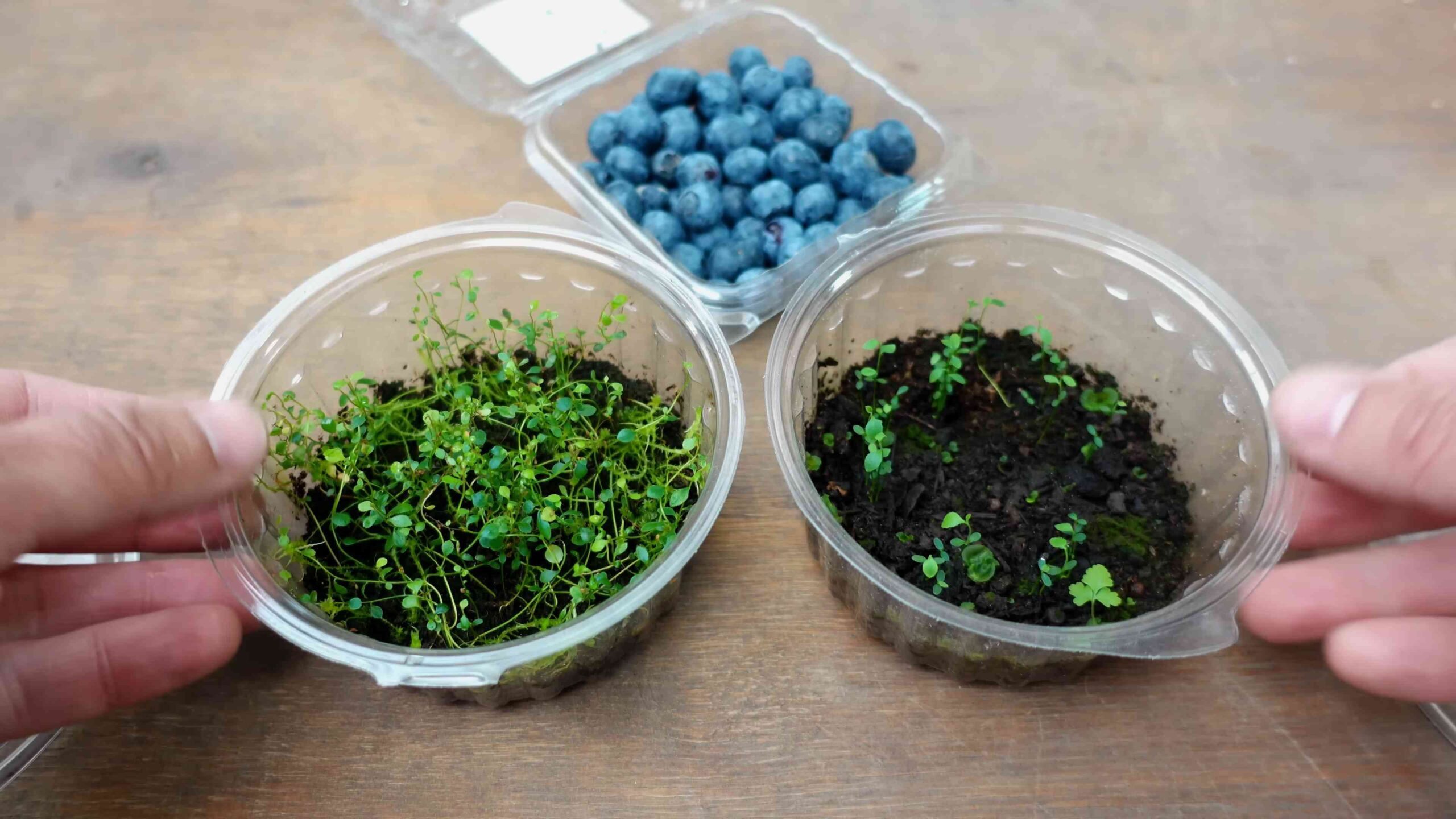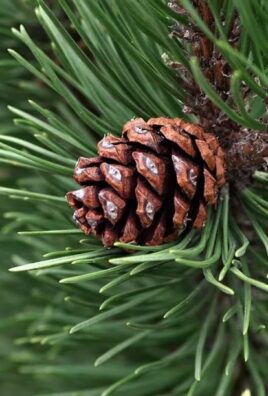Planting blueberries from seeds might seem like a daunting task reserved for seasoned horticulturalists, but I’m here to tell you it’s absolutely achievable for the everyday home gardener! Forget those expensive nursery trips; imagine the satisfaction of nurturing a blueberry bush from the tiniest seed to a fruit-bearing beauty, all thanks to your own two hands.
Blueberries have a rich history, deeply intertwined with Native American culture. For centuries, they’ve been cherished not only for their delicious flavor but also for their medicinal properties. They were a vital food source, and various tribes had unique methods of preserving and using them. Now, we can continue this tradition in our own backyards!
Why should you consider planting blueberries from seeds? Well, for starters, it’s incredibly cost-effective. Plus, you gain complete control over the variety and health of your plants from the very beginning. In this article, I’ll guide you through each step, from seed stratification to transplanting, ensuring you have all the knowledge you need to successfully grow your own bountiful blueberry patch. Get ready to roll up your sleeves and embark on this rewarding gardening adventure!

Growing Blueberries from Seed: A Patient Gardener’s Guide
Okay, so you want to grow blueberries from seed? Awesome! It’s definitely a long game, but the satisfaction of nurturing a blueberry bush from a tiny seed is incredibly rewarding. Just be prepared for a bit of a wait – it can take a few years to get those delicious berries. But trust me, it’s worth it!
Here’s the lowdown on how to make it happen:
Phase 1: Seed Extraction and Preparation
This is where we get our hands dirty! We need to get those tiny seeds out of the blueberries and ready for germination.
- Choosing Your Berries: Opt for fully ripe, organic blueberries. Organic is important to avoid any unwanted chemicals that might hinder germination. You can use fresh or frozen berries (thawed, of course!).
- The Extraction Process: This can be a little messy, but it’s crucial.
- Mash the Berries: Gently mash the blueberries in a small bowl. You can use a fork or your fingers (wear gloves if you prefer!). The goal is to break down the flesh and release the seeds.
- Water Separation: Add some water to the mashed berries. Stir well and let the mixture sit for a few minutes. The pulp will float to the top, and the seeds will sink to the bottom.
- Careful Pouring: Slowly pour off the pulp and water, being careful not to lose the seeds. You might need to repeat this process several times, adding more water and pouring off the pulp, until you’re left with mostly seeds at the bottom.
- Seed Cleaning: Once you have a good collection of seeds, rinse them thoroughly under running water. Rub them gently between your fingers to remove any remaining pulp.
- Drying the Seeds: Spread the cleaned seeds on a paper towel in a single layer. Let them dry completely in a cool, well-ventilated place. This can take several days. Make sure they are completely dry to prevent mold growth.
Phase 2: Stratification – Mimicking Winter
Blueberry seeds need a period of cold stratification to break their dormancy. This mimics the natural winter conditions they would experience in the wild.
- Why Stratification? This process tells the seed that it’s time to wake up and grow when spring arrives. Without it, your seeds are unlikely to germinate.
- The Stratification Process: This involves keeping the seeds in a cold, moist environment for a specific period.
- Prepare Your Stratification Medium: You’ll need a small container (like a plastic bag or a small container with a lid) and a moist medium. Peat moss or vermiculite work well. Moisten the medium so it’s damp but not soggy. You should be able to squeeze it and only get a drop or two of water.
- Mix Seeds and Medium: Gently mix the dried blueberry seeds with the moist peat moss or vermiculite.
- Seal and Label: Place the mixture in your container and seal it tightly. Label the container with the date and the type of seed (blueberry!).
- Refrigerate: Place the container in your refrigerator (not the freezer!) for 90-120 days. The ideal temperature is between 33°F and 41°F (0.5°C and 5°C).
- Check Moisture Levels: Periodically check the moisture level of the medium. If it starts to dry out, lightly mist it with water. You don’t want it to be soaking wet, just consistently damp.
Phase 3: Sowing the Seeds
After the stratification period, it’s time to sow the seeds and hopefully see some tiny blueberry seedlings emerge!
- Choosing Your Potting Mix: Blueberries need acidic soil. A mix specifically formulated for azaleas, rhododendrons, or camellias is ideal. You can also create your own mix by combining peat moss, perlite, and a small amount of compost.
- Selecting Your Containers: Use small pots or seed trays with drainage holes. Good drainage is essential to prevent root rot.
- Fill the Containers: Fill your containers with the acidic potting mix, leaving about half an inch of space at the top.
- Sow the Seeds: Sprinkle the stratified seeds evenly over the surface of the soil. Don’t bury them too deep; they need light to germinate. Gently press them into the soil.
- Water Gently: Water the soil gently using a spray bottle or a watering can with a fine rose. You want to moisten the soil without disturbing the seeds.
- Provide Humidity: Cover the containers with a clear plastic dome or plastic wrap to create a humid environment. This will help the seeds germinate.
- Find a Warm, Bright Spot: Place the containers in a warm, bright location, but out of direct sunlight. Direct sunlight can scorch the delicate seedlings. A temperature of around 70-75°F (21-24°C) is ideal.
- Monitor Germination: Keep the soil consistently moist, but not soggy. Check for germination regularly. Blueberry seeds can take anywhere from a few weeks to a few months to germinate, so be patient!
- Remove the Cover: Once the seedlings start to emerge, gradually remove the plastic dome or plastic wrap to allow for better air circulation.
Phase 4: Caring for the Seedlings
This is where the real work begins! Nurturing those tiny seedlings into healthy blueberry plants requires consistent care and attention.
- Light: Provide the seedlings with plenty of bright, indirect light. If you don’t have enough natural light, you can use a grow light.
- Watering: Water the seedlings regularly, keeping the soil consistently moist but not soggy. Allow the top inch of soil to dry out slightly between waterings.
- Fertilizing: Once the seedlings have developed a few sets of true leaves, you can start fertilizing them with a diluted acidic fertilizer. Use a fertilizer specifically formulated for acid-loving plants, and follow the instructions on the label. Fertilize every few weeks during the growing season.
- Transplanting: Once the seedlings are large enough to handle (a few inches tall), you can transplant them into larger pots. Use the same acidic potting mix as before.
- Hardening Off: Before transplanting the seedlings outdoors, you’ll need to harden them off. This process gradually acclimates them to outdoor conditions. Start by placing the seedlings outdoors in a sheltered location for a few hours each day, gradually increasing the amount of time they spend outdoors over a week or two.
- Choosing a Planting Location: Blueberries need full sun (at least 6 hours of direct sunlight per day) and well-drained, acidic soil.
- Soil Preparation: Before planting, amend the soil with plenty of peat moss or other organic matter to improve drainage and acidity. You can also add sulfur to the soil to lower the pH. Aim for a soil pH of between 4.5 and 5.5.
- Planting: Dig a hole that is twice as wide as the root ball and just as deep. Gently remove the seedling from its pot and loosen the roots. Place the seedling in the hole and backfill with soil. Water thoroughly.
- Mulching: Apply a layer of mulch around the base of the plant to help retain moisture, suppress weeds, and regulate soil temperature. Pine needles, wood chips, or shredded bark work well.
Phase 5: Ongoing Care
Even after transplanting, your blueberry plants will need ongoing care to thrive and produce delicious berries.
- Watering: Water your blueberry plants regularly, especially during dry periods. Blueberries need consistent moisture to produce well.
- Fertilizing: Fertilize your blueberry plants in the spring with an acidic fertilizer. Follow the instructions on the label.
- Pruning: Prune your blueberry plants annually in late winter or early spring to remove dead, damaged, or crossing branches. Pruning helps to improve air circulation and sunlight penetration, which can increase fruit production.
- Pest and Disease Control: Monitor your blueberry plants for pests and diseases. Common blueberry pests include aphids, spider mites, and blueberry maggots. Common blueberry diseases include powdery mildew and botrytis blight. Take appropriate measures to control any pests or diseases that you find.
- Patience: Remember that it can take several years for blueberry plants grown from seed to start producing fruit. Be patient and continue to provide them with the care they need, and you’ll eventually be rewarded with a bountiful harvest of delicious blueberries!
Growing blueberries from seed is a labor of love,

Conclusion
So, there you have it! Planting blueberries from seeds might seem like a daunting task, but with a little patience and the right approach, you can cultivate your own thriving blueberry bushes. This DIY method offers a unique level of control over your blueberry varieties and allows you to nurture plants perfectly adapted to your specific environment. Forget relying solely on nursery-bought plants; embrace the satisfaction of watching your blueberry patch grow from the very beginning.
This isn’t just about saving money (though that’s certainly a perk!). It’s about connecting with nature, understanding the life cycle of these delicious berries, and enjoying the fruits (literally!) of your labor. Imagine serving homemade blueberry muffins made with berries you grew yourself – the taste of accomplishment will be just as sweet as the berries themselves.
Don’t be afraid to experiment! Try different blueberry varieties to see which ones thrive best in your area. Consider using different soil mixes to optimize drainage and acidity. You can even try starting your seeds indoors during the winter months to get a head start on the growing season.
Ready to embark on your blueberry-growing adventure? We highly encourage you to give this DIY trick a try. It’s a rewarding experience that will provide you with fresh, delicious blueberries for years to come. And remember, the journey is just as important as the destination. Enjoy the process of nurturing your seedlings, watching them grow, and eventually harvesting your own bountiful crop.
Once you’ve given it a go, we’d love to hear about your experience! Share your tips, tricks, and challenges in the comments below. Let’s build a community of blueberry enthusiasts and learn from each other. Happy planting!
Frequently Asked Questions (FAQ)
Is planting blueberries from seeds really worth the effort?
Absolutely! While it requires more time and patience than buying established plants, planting blueberries from seeds offers several advantages. You gain complete control over the variety you grow, allowing you to select cultivars best suited to your local climate and soil conditions. It’s also a significantly more cost-effective way to establish a large blueberry patch. Furthermore, the sense of accomplishment you’ll feel watching your plants grow from tiny seeds is incredibly rewarding. It’s a fantastic learning experience and a deeper connection to the natural world.
How long does it take to grow blueberries from seeds to harvest?
Be prepared for a long-term commitment! Growing blueberries from seeds is a marathon, not a sprint. It typically takes 3-5 years for blueberry plants grown from seed to produce a significant harvest. The first year or two will be focused on seedling development and establishing a strong root system. Patience is key! However, the wait is well worth it when you finally taste those homegrown blueberries.
What type of soil is best for planting blueberry seeds?
Blueberries are acid-loving plants, so the soil is crucial. Aim for a soil pH between 4.5 and 5.5. You can test your soil using a home testing kit or by sending a sample to your local agricultural extension office. Amend your soil with peat moss, sulfur, or other acidifying agents to lower the pH if necessary. The soil should also be well-draining and rich in organic matter. A mix of peat moss, sand, and compost works well.
How do I germinate blueberry seeds successfully?
Blueberry seeds require a period of cold stratification to break dormancy. This means they need to be exposed to cold temperatures for a certain amount of time before they will germinate. You can achieve this by placing the seeds in a damp paper towel inside a sealed plastic bag and refrigerating them for 90-120 days. After stratification, sow the seeds in a seed-starting mix and keep them consistently moist. Germination can take several weeks.
What are the best conditions for growing blueberry seedlings?
Blueberry seedlings need bright, indirect light. Avoid direct sunlight, which can scorch their delicate leaves. Keep the soil consistently moist but not waterlogged. Use a spray bottle to mist the seedlings regularly. Once the seedlings have developed a few sets of true leaves, you can transplant them into individual pots. Continue to provide them with acidic soil and regular watering.
When should I transplant my blueberry seedlings outdoors?
Transplant your blueberry seedlings outdoors in the spring after the last frost. Choose a sunny location with well-drained, acidic soil. Dig a hole that is twice as wide as the root ball and just as deep. Gently remove the seedling from its pot and loosen the roots. Place the seedling in the hole and backfill with soil. Water thoroughly.
How often should I water my blueberry plants?
Blueberry plants need consistent moisture, especially during the growing season. Water deeply whenever the top inch of soil feels dry. Avoid overwatering, which can lead to root rot. Mulching around the base of the plants with pine needles or wood chips can help retain moisture and suppress weeds.
Do blueberry plants need fertilizer?
Yes, blueberry plants benefit from regular fertilization. Use a fertilizer specifically formulated for acid-loving plants. Apply the fertilizer in the spring, following the instructions on the package. Avoid over-fertilizing, which can damage the plants.
What are some common pests and diseases that affect blueberry plants?
Blueberry plants can be susceptible to various pests and diseases, including aphids, spider mites, blueberry maggot, and fungal diseases. Monitor your plants regularly for signs of infestation or disease. Treat any problems promptly with appropriate insecticides or fungicides. Proper pruning and good air circulation can help prevent many diseases.
Can I grow blueberries in containers?
Yes, you can successfully grow blueberries in containers, especially if your soil is not naturally acidic. Choose a large container with drainage holes and fill it with an acidic potting mix. Select a compact blueberry variety that is well-suited for container growing. Water and fertilize regularly.
What varieties of blueberries are best to plant from seed?
While you can technically plant any blueberry variety from seed, remember that the resulting plants may not be identical to the parent plant due to genetic variation. However, some varieties known for their adaptability and vigor, such as some of the wild blueberry species, might be good starting points. Research which blueberry varieties are best suited for your local climate and soil conditions before you begin.
How do I ensure the soil remains acidic for my blueberry plants?
Maintaining soil acidity is crucial for healthy blueberry growth. Regularly test the soil pH and amend it as needed with sulfur or other acidifying agents. You can also use acidic mulches, such as pine needles or oak leaves, to help maintain the soil’s acidity. Avoid using alkaline fertilizers or watering with hard water, which can raise the soil pH.
What if my blueberry seeds don’t germinate?
Germination rates can vary, and not all seeds will sprout. Ensure you’ve followed the cold stratification process correctly and that the seeds are kept consistently moist. If you’ve tried these steps and still have no germination, consider trying a different batch of seeds or adjusting your germination setup. Patience is key, and sometimes it takes a few tries to get it right.
How can I protect my blueberry plants from birds?
Birds love blueberries just as much as we do! To protect your crop, consider covering your blueberry bushes with netting before the berries begin to ripen. You can also use bird deterrents, such as shiny streamers or scarecrows.





Leave a Comment